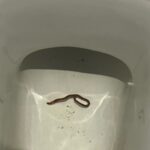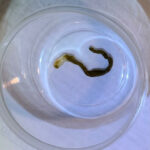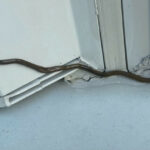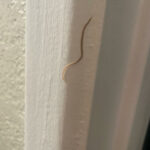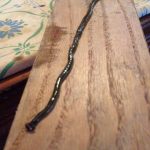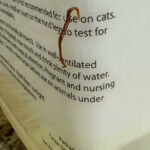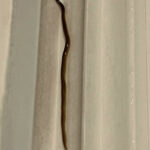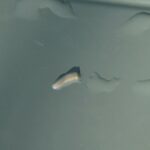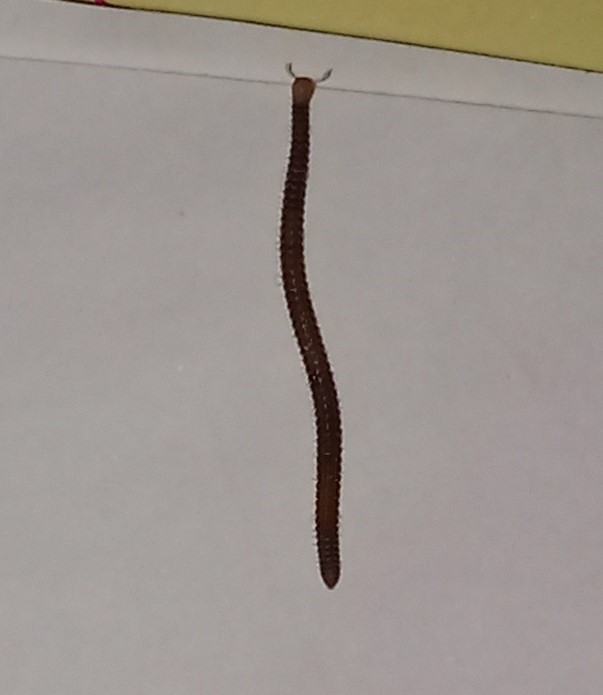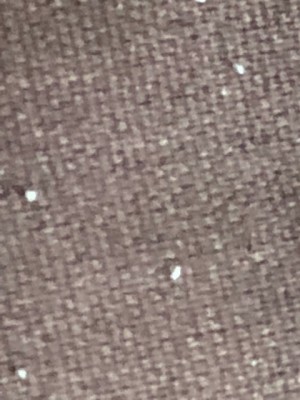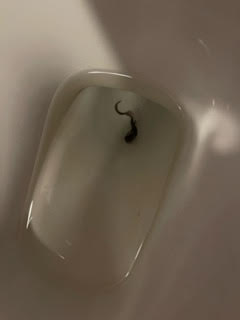
“I found this worm wriggling in my clean toilet bowl”, states this reader about the darkly-colored organism pictured below. “It is about 6-inches long, brown, with thin rounded ends, but appears to have a flat body. What is it, please?” The photo she provides does not lend us much detail: when zooming in, the organism becomes merely blurry, which speaks to the low resolution of the photo. That always makes it harder to identify an organism, as its physical characteristics are the number one giveaway for its species. That said, based on the description our reader gave us, we would conclude that this is some type of flatworm.
Flatworms are predatory worms that feed on other invertebrates such as insect larvae, snails, and even other flatworms. They possess amazing abilities such as cellular regeneration (they can grow back their body if severed), and secretion of fluids which can paralyze and liquefy their prey. They are not generally harmful to humans or pets, but one should avoid contact with them, as these fluids can cause allergic reactions, resulting in stinging pains and/or irritation of the skin. Flatworms can reproduce sexually and asexually, and their aforementioned ability to regenerate their cells means that if a flatworm is split in two, two flatworms will form from the severed parts: the head will grow a new tail, and the tail will grow a new head.
As is the case with most worms, this flatworm likely found its way into our reader’s toilet because there is a leak somewhere in the underground piping through which it could squeeze. It was likely chasing prey: perhaps an earthworm or some other critter that was going in the direction of our reader’s toilet. If the leak is nearby, our reader will notice that her water is perhaps discolored, foul-smelling or -tasting, or that the water pressure in her taps is inconsistent. If she notices any of these signs, it might be worth contacting a professional to deal with this issue. Otherwise, we recommend scooping the worm onto something and avoiding skin-to-skin contact, and moving it outside.
In conclusion, we think that the long, brown worm in our reader’s toilet is a flatworm. It is nothing to worry about, as infestations of flatworms are not common. If anything, she should just be on the lookout for signs of a leak, as that would pose the greater issue. We hope this information proves helpful, and we wish our reader the very best!
All About Worms is always free, always reader-supported. Your tips via CashApp, Venmo, or Paypal are appreciated! Receipts will come from ISIPP Publishing.
You might also find these guys interesting!




